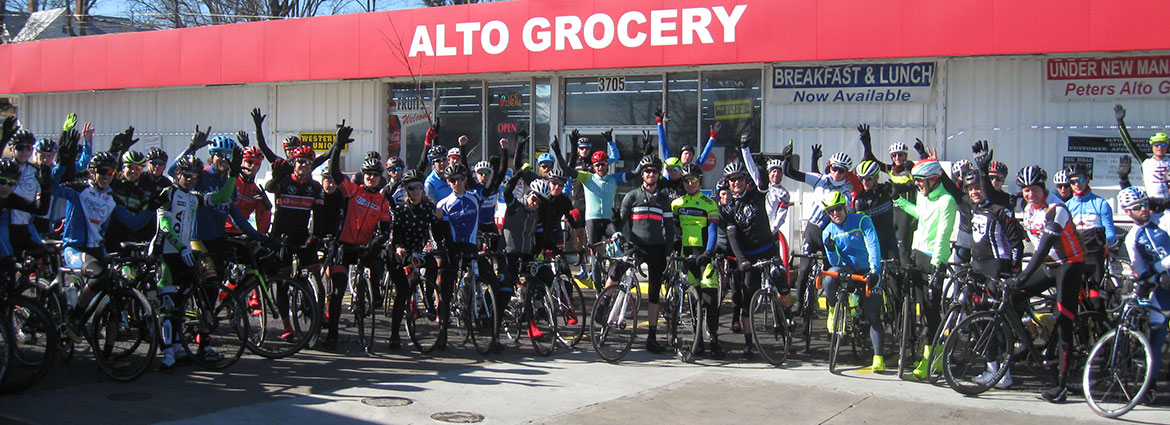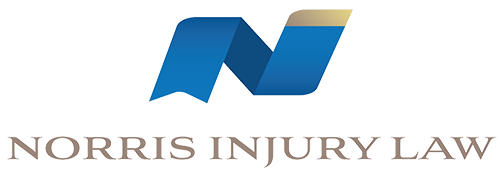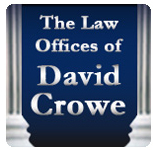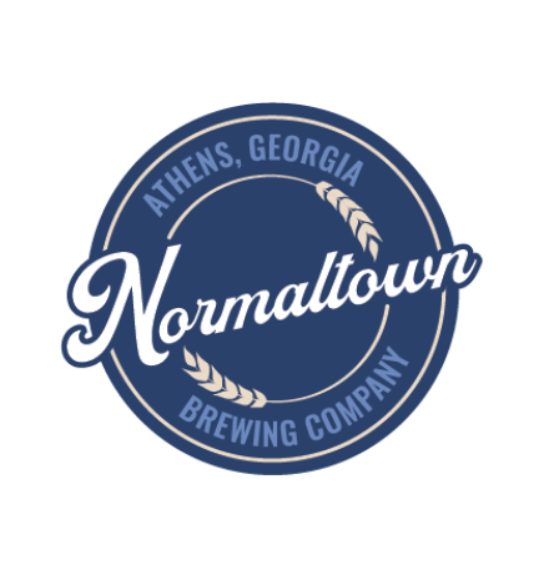Cuba
CUBA
Growing up in Athens, Georgia as a young tyke in the 60’s and 70’s Cuba, and Castro, were a curious enigma. When an opportunity arose to travel to Havana, Cuba in 2004 and represent the United States in the Master’s Pan-American Cycling Championships, I jumped at the opportunity. I was 43 years old and the clock was ticking.
Prior to leaving in October, Condoleeza Rice announced that a State Department official, Caleb McCarry, had been put in charge of overseeing the transition to democracy in Cuba. The details of the transition were published in a 400-plus page report titled Transition to Democracy. The transition would occur, appropriately enough, after Castro’s death, and he would be 80 in August of 2006. Ms. Rice was assuming Castro wouldn’t live forever. I wasn’t so sure. I learned in grammar school that Castro had sold his soul for a box of Cohibas.
We had reams of forms to fill out and all the paperwork took several months to process, but eventually thirty five gringos were granted permission by the United States Department of the Treasury to travel to Cuba. Travel from the U.S. to Cuba is banned except in certain narrow circumstances, an athletic competition being one of them. It is possible to travel to Mexico, Nassau or Canada, then catch a flight into Havana, but the continent-hopping is avoided by taking the 45 minute chartered flight directly from Miami. That option is not usually available.
Part 1: Cuba—Before Humble
Catsro has been blowing cigar smoke (Cohibas!) across the 90 mile Florida Strait and into our faces since 1959, the year he, his brother Raul, Che Guevera, and their bearded band of armed brigands streamed out of their rebel redoubts in the Sierra Maestra mountains and rolled into Havana. Castro has been el Maximo Jefe ever since. Ten U.S. presidents have lived at the White House during his lone tenure as boss in Cuba. No leader of any underdeveloped country of any size has sat on the throne as long as Castro.
Fidel is still a venerated caudillo throughout much of Latin America, especially among the older generation of Cubans, but his quixotic resistance to the implacable ebb of globalization has frustrated a few in the younger crowd. Fidel Castro is a homegrown Cuban turned ideologue turned lawyer turned revolutionary turned killer turned leader turned executioner turned communist turned socialist turned dictator (not necessarily in that order). Castro has survived invasions, assassination attempts, family rifts, the loss of trusted advisors, the collapse of Communism and terrorist attacks. He is instantly recognizable. Love him or hate him, the man is resilient.
Castro was born in1926 in the midst of tumultuous times. Spanish rule had ended only 28 years earlier, in 1898, at the tail end of yet another revolution led by a national hero, revolutionary activist, political theorist and exiled poet named José Martí. Martí demanded Cuban independence from Spain. The Spanish flag had flown over Cuba for nearly 400 years, since it was first planted by Diego Velázquez, a Spanish Conquistador, in 1509, only 17 years after Columbus first spied “the Pearl of the Antilles” (as pirates, merchants, slave traders and freebooters came to call the island) on his famous voyage in 1492.
Although Martí provided the impetus for change, Spanish rule didn’t officially end until the U.S. entered the fray in 1898. Martí was dead by then, having been shot off his horse in 1895. In 1898 the U.S. Maine exploded in the Havana harbor and sunk, killing 258 American sailors. The U.S blamed the loss of life on Spanish saboteurs. The Spanish-American War was afoot. Teddy Roosevelt, the future president, gained fame by leading his band of Rough Riders in a cavalry charge up San Juan Hill. The U.S dispossessed Spain and our military occupied Cuba for four years, from 1898 to 1902. In 1902, the island became the Independent Republic of Cuba.
The United States didn’t leave entirely. Under the terms of the Platt Amendment, the U.S. granted itself a lengthy (permanent) lease to a large parcel of real estate known as Guantanamo Bay. Even though the Platt Amendment was repealed in 1934, the U.S. was able to hang on to Guantanamo through the Bay of Pigs, the Cuban Missile Crisis, the entirety of the Cold War, Cuba’s Special Period, and into the new millennium. We still have a military base at Gitmo (as the military calls Guantanomo). We house a few “enemy combatants” there at the moment. God has always blessed the U.S. with a gaggle of tricky lawyers.
After Cuba became a republic in 1902, the next thirty one years were gripped by violence, plagued by corruption, replete with assassinations, undergirded by oppression, and dotted with a succession of rulers. Ferdinand Batista staged a successful coup in 1933. He was the impresario of the Cuban stage for the next twenty five years, until 1959, the year Fidel Castro came to town.
Batista pulled the levers from behind the scenes at first, but eventually assumed the reins of leadership himself. Batista’s reign is regarded by most historians as cruel, oppressive and vindictive. The U.S. supported Batista’s regime, however. We were heavily invested in Cuba at the time, so we were willing to overlook a few minor peccadilloes. By 1959, the U.S. controlled ninety percent of telephone and electric service, eighty percent of the public railroads, and seventy percent of petroleum imports and distribution in Cuba. We also supplied arms to Batista so he could protect our valuable commodities, although we always controlled the volume. Batista always worried us and near the end of his term became a bit of a wildcard.
Castro grew into manhood during Batista’s little reign of terror. Castro was sympathetic to the plight of the poor and disgusted with the living conditions of the peasants. He saw only hypocrisy in organized religion. When Castro attended law school in Havana, he met up with other kindred spirits. He developed strong egalitarian beliefs—principles on which his future revolution would be founded. He began delivering blistering, finger-wagging diatribes aimed at Batista and the wealthy denizens of the Havana elite. The early film footage of Castro in law school shows he was good-looking and physically imposing. He was a big, burly man in his early 20’s. He was charismatic. He drove his points home with the force of a sledgehammer. He was a fire-breathing, cocksure volcano constantly erupting. Castro refused to be contained.
On July 26, 1953, Castro staged his first hostile takeover attempt, a poorly-planned revolt against the Moncado military fortress. Weapons and other munitions were stored at Moncado. But this wasn’t the Bastille and Castro and his followers were captured and put on trial.
Castro represented himself and over one hundred others at trial. His conviction was a foregone conclusion, so he used his trial as an opportunity to announce his revolutionary platform: He denounced the insipid corruption that permeated Cuban politics; he vowed to fight for the poor and for equality for all; he sought to redistribute the land; he argued for a constitution. Although no transcript of his oration exists, it was at this trial that Castro echoed his famous remark: “Condemn me, it does not matter. History will absolve me.” This proclamation became the mantra for his nascent July 26 Revolutionary Movement.
Only 26 men other than Castro were convicted, a remarkable feat for any criminal defense attorney. Batista didn’t execute Castro though; he feared the repercussions. Instead, he sent Castro and his brother Raul to the Isle of Pines (today renamed “Isle of Youth”), a small island off the coast of Cuba, to serve out fifteen year prison sentences. Six years later, Batista would regret his decision not to execute Castro. But the past can never be changed, it can only be repeated.
Castro chewed through books in prison: He read Lenin, Napoleon and Roosevelt. He fortified his mind and hardened his revolutionary resolve. His determination strengthened, his intellect widened. He plotted and he planned. Still, by most accounts, he was not yet a Communist. He would not that don that dirty little hat until several years down the road.
Less than two years into his sentence, Batista granted the Castro brothers amnesty, another decision Batista would live to regret. Fidel and Raul left Cuba and took up residence in Mexico. In Mexico, Fidel met Che Guevera, another kindred spirit buffing his anti imperialistic rage into a fine shine. Che, a young Argentinean, also had a strong distaste for the United States. Che had been in Guatemala and witnessed the U.S. crush a reformist revolt there. There was an immediate chemistry between the two, and an immediate attraction. Castro and Guevera, like John and Paul, would shunt the tracks of world history in a different direction. They all spoke of a coming revolution.
In 1956, the Castro brothers, Che and about eighty other recruits landed on the beaches of Cuba in another ill prepared assault on the Cuban hierarchy. Most were captured or killed, but both Castros, Che, and a handful of others escaped into the rugged hinterland of the Sierra Maestra Mountains. Although Cuba is only a 700 mile long, amoeba-shaped sliver of land, the Sierra Maestra Mountains soar to over 6600 feet at the highest point. There are plenty of places to hide.
Castro and his boys buried themselves deep in the mountains. They regrouped and recruited locals, mostly peasant farmers, who helped to hide and to feed the rebels. The rebels stayed on the move, bivouacking in various rebel redoubts that were scattered throughout the mountains. Castro, Che and Raul orchestrated hit and run attacks on Batista’s army barracks and supply lines for two years. Their ranks of rebel fighters eventually swelled to over 200, a small number as successful revolutions go, but still more than 12.
Batista could never pinpoint Fidel’s whereabouts. He grew furious. Over time, the pendulum of public opinion began to swing in the rebels’ favor. Castro became a modern day Robin Hood. Revolutionary fever reached into the cities and spread through underground channels like a virus. Batista could not stamp out the revolt, nor staunch the swell of revolutionary spirit that rolled across the country. The sword of Damocles finally dropped when the United States cut the flow of arms to Batista. We saw that Fidel would capture Cuba. Batista left town with all the cash he could carry and ultimately landed in Spain. In 1959, Fidel took charge. As 2006 comes to a close, Castro has just relinquished power to his brother Raul, the first time he has ever done so in 47 years.
Since Castro seized power in 1959, formal relations between the United States and Cuba have plummeted like a bowling ball rolling off a table. The poor relationship between the two near neighbors has been forged by a series of misfires, missteps, blunders and chain skips—a series of one missed opportunity after another.
The experts disagree over whether Castro was a baptized Communist in ’59, although the evidence indicates that Raul and Che had already chosen Old Scratch’s path. Initially after the takeover in ’59, Castro appeared to send conciliatory signals towards Washington. He suggested that the U.S. and Cuba could achieve harmonious relations. Many exiles argued that Castro’s statements were nothing more than appeasing cants. There can be no doubt that two years later, in 1961, Castro was riding in Khrushchev’s sidecar. Even today experts disagree over whether the United States helped push him there.
Thousands fled Havana in advance of Castro and his Revolution leaving behind large houses and sizable assets—fuel for the Revolution. Most exiles landed in Miami for what they thought was only a brief stay. Many that stayed behind were executed as the Revolution extirpated its enemies. One reason that Castro has remained in power for so long is because of his proficiency in crushing all voices in opposition whether by imprisonment, banishment or bullet. These obstacles, combined with the fact that Fidel owns all the official printing presses and controls the flow of information (other than signals beamed in by the U.S. over Radio Marti) create an atmosphere in which it is difficult for a dissenting opinion to rise above the din.
After Castro gained power, despite the Grand Guignol created by televised trials and executions held in public at a sports stadium, despite Castro’s macho crackdown on gays and artists, and despite his stuffing of all free speech—except his own—much of the world was enamored with Castro and his Revolution. The myth that surrounds Castro swirled the swiftest in the early years. Castro reduced rents throughout the country; he gave junior members of government raises while reducing the pay of those higher up the ladder; and he announced that education and medical attention for the poor were a priority of the new government in Cuba. The working class, the lower class, and the outcasts all identified with Castro, Che and their homespun Cuban morality play. Even Sartre sang a paean to the Revolution when he said: “The remedy is extreme; it is often necessary to expose it by violence.”
Castro was as slippery as a Supreme Court nominee and a thousand times more animated. His ideological position was impossible to pin down, at first. He worked the press with the sangfroid of a veteran trial attorney. When Castro visited the United Nations in 1960, he refused to stay in Manhattan with other world leaders. He opted for a hotel in Harlem instead. The press followed. With cameras rolling Castro claimed he identified with the struggle of blacks in America. Even a thickskulled Muscovite like Khrushchev recognized the benefit of a photo with Castro. He put his shoe back on and rushed over to Harlem to have one made. Castro was a rock star revolutionary. He feasted on the attention.
Even before Castro’s visit to New York in 1960, the U.S. had decided Castro must go. We decided to pull his economic rug out from under him. Sugar was a major export for Cuba and the U.S. had been a major importer of sugar during Batista’s rule. After Castro took over, Russia stepped in and signed a sugar deal with Cuba, agreeing in 1960 to purchase a million tons of sugar for the next five years. Payment arrived on Russian tankers in the form of crude oil. In 1960, U.S. companies, including oil refineries, were still operational in Cuba. When Russia’s oil arrived, Castro asked Shell, Standard Oil and Texaco to refine it. Under pressure from the U.S., the big oil companies refused. That was no problema for Castro—he confiscated the oil companies and refined the oil himself. Afterwards President Eisenhower sent a message to CIA Director Allen Dulles: Kill Castro.
The U.S. stopped all purchases of sugar from Cuba. We would starve Castro out. Russia stepped in and signed a second deal to purchase all the sugar the U.S. refused in addition to what Moscow had already agreed to buy. Castro and the fat little Russian called our bluff. Khrushchev even had the brass monkeys to announce that the Monroe Doctrine had outlived its usefulness. Like two negative charges, Cuba and the U.S. repulsed each other in Castro’s early years.
Castro didn’t stop with the U.S. oil companies. He continued with his economic reform program by nationalizing over a billion dollars worth of other U.S. owned properties. He drew a line in the sand, then jumped over it. The U.S.’s riposte was to announce a trade embargo. An embargo would not only stifle Castro, it would suffocate the people. Forty-seven years later, with the embargo still in place, Castro and the Cubans are still bobbing on the surface, refusing to go under.
In 1961 the CIA planned and orchestrated an invasion of Cuba. The invasion was planned during Eisenhower’s watch, but executed under Kennedy’s. The invasion was carried out by 1800 Cuban exiles. The CIA trained rebels inadvertently landed on the island in a swampy quagmire at the Bay of Pigs. They became bogged down in the mud and were picked off as easy as turtles on a log. The U.S. provided no air cover and the supply ships lounging at sea were quickly sunk by Cuban fighters. It only cost us 53 million dollars in food and medicine to buy back 1000 prisoners of war. The invasion was apropos of a Monty Python skit, but without the humor. Castro became an instant icon in Latin America. He must have thrown one hell of a party.
After the invasion, there was no doubt on which side of the fence Castro had landed—he was Red. Castro openly declared he was a “Marxist-Leninist,” whatever that is (was). There was a second exodus of Cubans when Castro publicly aligned himself with the dark side. Over 150,000 of the liberal middle class left between 1961 and 1962. Castro, ever the puppeteer, allowed some of the voices of opposition to drift away.
The dung splattered again in 1961. U.S. reconnaissance planes spotted Soviet missile installations in Cuba. Cuba and Castro had become more than just a nuisance, now they were an actual threat. Soviet missiles with nuclear warheads were steaming towards Cuba and would be capable of striking any city in the southeastern United States. Throughout the U.S., the alarm bells clattered.
Nuclear holocaust was averted when Kennedy and Khrushchev reached a compromise. Russia pulled the plug on the missiles in an exchange for a promise from the U.S. not to invade Cuba. The Soviet Union continued its support of Castro’s fledgling socialist paradise for another thirty years. In 1989 the Berlin Wall crumbled to the ground, and in 1991 the spigot from Russia to Cuba finally ran dry.
U.S.-Castro relations have been dotted with disasters and punctuated by failures: The downing of a Cuban commercial plane carrying its fencing team in 1976 (all seventy three on board were killed. Two former CIA agents were charged with planting a bomb on the plane. One was found “Not Guilty” and the other escaped); the Mariel boatlift of 1980 (an impromptu exodus of 150,000 Cubans to Miami, during which Castro emptied prisons, detention facilities and mental institutions and boarded them on rafts for Miami); the downing of a Brothers to the Rescue plane near Havana in 1996 (the unarmed rescue plane routinely took off from Miami to pick up Cuban balseros floating in the ocean); the Torricelli Bill (1992 law that prevented U.S. corporations with foreign subsidiaries from trading with Cuba) and the Helms-Burton Act (1995 law that punishes other countries that trade with Cuba); and the Elian Gonzalez affair in 1999 (he’s a hero now in Cuba). In the last forty years, the low spots on the timeline in the relationship between Washington and Havana are plentiful, but the peaks are invisible—there are none.
After 1961, even though openly aligned with the Soviet Union, Cuba remained autonomous from the Soviet theory of economics, of which Guevera was highly critical. In 1970, Cuba adopted the Soviet economic model. Russian bureaucrats streamed into Cuba during the 70’s. Soviet-bloc aid and support made up a third of Cuba’s annual gross domestic product for nearly three decades. In the 80’s, the Soviets were contributing 4 – 6 billion dollars a year in economic aid and support. Cuba had become a Communist country.
The foreign aid allowed Castro to export his Revolution while Moscow winked. Castro sent Che and his rebels to fight and to train other guerilla movements in Africa and South America in the 60’s. In 1966, Che was captured in Bolivia with other resistance fighters. He was executed in the presence of a CIA agent within twenty four hours of his capture and his emaciated body was put on display for the world to see. His hands were cut off for good measure. Castro called him “the Christ of the Cuban Revolution.” Che had achieved martyrdom.
Throughout the 70’s and 80’s, Cuba and Castro remained noisy nuisances. In 1985, Gorbachev took over in Russia. He advocated friendlier relations with the U.S. through his policy of “perestroika.” Change was afoot. The Eastern-bloc countries were already rumbling and the ground was shaking, especially in East Germany, Poland and Czechoslovakia. The Berlin Wall fell in 1989 and the reverberations were felt round the world. Communism was crashing in on itself.
In 1991, Russian aid to Cuba was withdrawn. Cuba’s economy was sent into a nosedive. Food was scarce, there were no jobs, there was no money, and resources were ephemeral. So were the cats—hungry people ate them. Oxen replaced tractors and mule-drawn buggies replaced cars. People walked or hitchhiked. Castro put the best spin on the situation he could, telling the Cubans they were now in a “special period in a time of peace.” He reminded everyone that they must sacrifice for the good of the Revolution. Cubans must remember “la Lucha,” the struggle. The 90’s in Cuba became known as “the Special Period.”
In the U.S., the withdrawal of Soviet aid signaled the beginning of the end for Castro. The Castro “deathwatch” became a fashionable pastime. In 1993, Andres Oppenheimer wrote a book titled Castro’s Final Hour. Basic necessities were either hard or impossible to find. Everyday goods such as toilet paper, writing paper, pencils, soap, milk, vitamins, aspirin and antibiotics were unattainable luxuries. Food and clothing were rationed. Gas, water and electric power were shut down at irregular intervals on a daily basis. The average wage was about $12 a month. Instead of tossing Cuba and its people a lifeline, we crossed our arms and waited for Castro to go under. We passed the Torricelli Act, an act that punishes U.S. corporations with foreign subsidiaries if they trade with Cuba, and the Helms-Burton Act, an act that attempts to punish other countries that trade with Cuba.
But news of Castro’s demise, like that of Franklin’s, was greatly exaggerated. Castro would not die. Neither would he bow to that “absurd and crazy chimera” called capitalism. Instead, throughout the 90’s, he instituted market reforms: Castro legalized the dollar; he gave his blessing to certain forms of self employment that had previously been illegal; he allowed a limited amount of free enterprise; and he opened up the tourist trade, the number one economic industry in Cuba today. Castro pulled back towards socialism and even took a small step towards capitalism.
Light rushed into the small portal created in the Cuban economy so swiftly that Castro recoiled. By 1995, Cuba had more than 208,000 licensed independent workers. Home based restaurants, called paladares, were enormously successful. Restaurateurs and taxi drivers were making twice as much as doctors and teachers. Castro was not happy. Castro has always ascribed to an egalitarian philosophy. He has never believed any person’s entrepreneurialism or creative genius should result in more income or in the accumulation of more assets. According to Castro, all men are equal to the nth degree. If Superman lived in Cuba, he would have to relinquish both his cape and his kryptonite.
A new breed of entrepreneur also appeared on the scene in the 90’s—the jintero, or street hustler. The jintero (jinetera if female) sold pilfered cigars, steered tourists (and their dollars) to certain bars or paladares (for a fee), and arranged for prostitutes. Jinterismo diverted money away from the government-owned stores and put it directly into the profiteers’ pockets. The hustlers cut Castro out of his take.
Draconian punishments were meted out for those caught hustling the tourists. Cubans caught talking to tourists five times could spend a year in jail. A single act of prostitution could cost two years, even if the guilty party was only sixteen years old and had been coaxed into the trade by her family. But even the threat of extended prison terms for minor infractions could not staunch the rapid growth of jinterismo. The clients— a plethora of bejeweled, paunch bellied white men looking to get laid by a sixteen year old (or younger) Cuban girl— were unfortunately just too plentiful.
In 1996, Castro became worried that he’d let the genie out of its bottle. He rewrote the rules, again, in his attempt to “rectify” the problem. He required re-registration of the self-employed, then pummeled them with onerous taxes. By 1998, the number of registered independent workers had dropped to less than half of what it had been. 85 percent of all paladares closed their doors in Havana alone. Many tourist locales and all tourist hotels were deemed “off limits” to Cubans unless one worked there.
Throughout the 90’s and into the present millennium, Castro has blamed the U.S. for the plight of the Cuban people. Castro blames all Cuba’s ills on the “economic embargo” and calls for its end. He garnered support from a contingent of unlikely sources. On his visit to Cuba in 1998, Pope John Paul II criticized the embargo and its ruinous effect on the people of Cuba. Jimmy Carter criticized the embargo (as well as Castro’s government) on his visit to Cuba in 2001. In 2003, Jose Miguel Vivanco, the Executive Director of the Americas Division of Human Rights Watch, called the “all-out embargo against Cuba” a failure. He called for a “middle ground approach” that “would serve the cause of Cuba’s brave dissidents far better.” Many world organizations (the United Nations, the World Trade Organization, the European Union, the Organization of American States) and countries (Canada, Great Britain, Mexico, France and Italy) criticize the embargo also. But the most unlikely of opponents are right here on home soil—American corporations. U.S. owned companies can only sit on the sidelines and cry as they watch the Canadians, the Italians and the Germans cut major inroads into the Cuban economy through joint ventures with its government.
Cynics believe our obstinate and unyielding stance with Castro is due to a well organized exile community of several million in South Florida. The Cuban exile community hates Castro to put it mildly, and like Herod’s daughter, will settle for nothing less than his head on a platter. These exiles are registered voters and they donate millions to friendly campaign coffers (shout out to Jesse Helms here!). The exiles refuse to support any politician who speaks of compromise with Castro. The significance of two million registered voters in Florida cannot be understated. Just ask Al Gore.
Of course, Castro routinely gives the exile community fresh fodder aplenty. According to the Human Rights Watch, Castro has systematically denied basic rights to all Cubans—fair trial, free expression, association, assembly, movement, and freedom of the press. His most recent crackdown occurred in 2003. Oswaldo Paya was involved in a political movement called the “Varela Project.” The Varela Project called for the gradual democratization of Cuba. The organizers, lead by Paya, attempted to collect signatures on a petition in support of his cause, just as the Cuban constitution states he is allowed to do.
Castro would not tolerate such a lese majesty and imposed repressive prison terms on group members. According to human rights observers, the trials were “shams” and nonviolent dissidents were given average sentences of 19 years in prison. According to Vivanco (Human Rights Watch): “Severe political repression has been constant throughout [Castro’s] time.” These findings by respected bodies give the exiles’ “no compromise” position a certain validity.
In October of 2004, I closed the books on Cuba, quit pretending to be a lawyer, packed my bike along with several rolls of toilet paper, and decided to go check things out for myself.
Part 2: Cuba—After Humble
I flew into Cuba in a chartered jet—an ancient, sputtering Russian clunker that was disguised under a fresh coat of paint. U.S. commercial jets don’t fly to Cuba. Out of my window, I saw Havana sparkling beneath me: Tall buildings glittered in the sunlight; stone fortresses built by the Spanish were anchored into the cliff side overlooking and guarding the harbor; large estate homes on palm lined avenues spread out from the center of the city; and white capped waves exploded against the Malecón, a curving seawall 7 kilometers long that separates Havana from the beguiling blue waters of the Caribbean. Havana looked splendid from high above. Down in the muck, I soon discovered things weren’t so serene.
After landing at the José Martí Airport, we were whisked away in an old school bus to our tourist hotel, the Hotel Tropicoco. The airport was situated on the outskirts of the city and our tourist hotel was another 12 miles farther out. We skirted around Havana traveling to the Tropicoco. Castro wanted our dollars off the streets, out of the city, and into his hotel as soon as possible.
On the drive to the hotel, we (the gringos) were struck by the number of people walking or standing along the highway on the outskirts of Havana. There were hundreds of people lining the roadway—men, women and children. It looked like an exodus of refugees after a disaster. Our bus driver told us the people were hitchhiking to and from Havana. This apocalyptic sight was simply part of life’s daily dance for the Cubans, just another typical day in this socialist paradise.
The reasons for the large number of walkers and hitchhikers were simple: No car, no money, and no gas. The small supply of gas that was available was selling at twice the price as in the U.S., and the average monthly wage of a Cuban in 2004 was about $20. Driving wasn’t an option. The only ones who did drive were driving government cars or taxis. Either Castro or the tourists were buying the gas. “But we are coping,” our bus driver said. “All vehicles are required to pick up the hitchhikers and give them a ride. It’s the law. It’s how we go to work in the morning and return to our families at night.” The hitchhikers were scooped up and crammed onto the beds of large trucks, on the backs of scooters, and many times onto one of the mule drawn wagons that clopped up and down the roads and freeways. The burro drivers in Cuba looked like Amish farmers that had relaxed their stringent sartorial code in favor of a more bohemian style. “Look, most people are laughing and smiling,” our bus driver added. And so they were.
The Hotel Tropicoco was a massive cement monolith that featured the Caribbean ocean as a backdrop. It was completely self-contained. The hotel boasted a cafeteria, a pool, a bar and a billion dollar view of the big blue ocean. At the hotel, dollars could be funneled directly into the government coffers without the threat of interference from a jintero. A tourist never had to leave the hotel grounds. Many gringos in my group never did.
The rooms at the Tropicoco were more akin to a college dormitory rather than a luxury suite. Rooms were small and the flooring and the walls throughout were cement. There were no phones. A small square of soap and a threadbare white loincloth were the only amenities provided. I was warned to bring my own toilet paper. There was no air conditioning, but there was a window that opened. Every evening around 6 p.m., the electricity was cut off by Castro in an effort to conserve resources, but our hotel had a generator that grumbled to life after a few false starts. The best food the hotel offered was the fruit—mangoes, plantains, cantaloupe, pineapples and papayas—which was fresh and plentiful, but the meat—bologna or chicken—was tough, dry and curled at the edges.
Castro has devised other tricks in addition to adopting Draco’s Code that he employs to build a barrier between the local Cuban community and the tourists (and their dollars). Cubans, other than the worker bees, are not allowed to enter the Hotel Tropicoco or any other tourist hotel on the island. Guests wear a purple wristband as proof of their temporary residence at the hotel. A tourist need not wear shoes or a shirt to gain entry to the Hotel Tropicoco, but a purple wristband is de rigueur.
One sultry afternoon, I was relaxing with a group of my confreres in the spacious open air lobby of the hotel. I was sitting next to the gift shop. T-shirts bearing the visage of Che Guevera hung from a rack beside me. A young Cuban family—a father, his bride and their small child—walked up the stairs to the entrance of the hotel. The father carried all the accoutrements of a day spent at the beach—towels, toys, a bag stuffed with their belongings, and their hats in his hands. They were stopped at the door by hotel security. Entry was refused. As the father turned to leave, he stared a laser beam right through me. I sheepishly glanced up at Che. He was still staring stoically into Cuba’s future. I doubted that this was what he had in mind.
The beaches are another locale where Castro’s economic architects have been hard at work. Castro can’t ban the locals from the beaches—that would fuel a new revolution. The beaches represent a way of life for Cubans. The magnificent beaches of Cuba are also a main attraction for tourists. The intersection of tourists and locals at the beaches create an opportunity for jinteros and jinteras to stick their fingers in Castro’s pie. Castro’s solution is to plant policía on the beaches. The police officers in Cuba are the most skilled and the most capable of all the military conscripts. (All Cuban males must serve 1 year in the military upon turning 18. The best conscripts go on to serve in the police, an esteemed job.)
The officers never approach, hassle or question a tourist, nor will they brook a local who does. When such an encounter is observed, the officer accosts the guilty Cuban culprit and demands registration papers. (Cubans are required to carry their “papers” on their person at all times. So are tourists.) The offender is detained while the officer radios in. Presently, the officer in the field (or on the beach) receives a complete profile on the offender. Too many violations and it’s off to the dungeon to be shackled and chained for a year. At best, it’s a fine and a black mark on an offender’s permanent record. I witnessed this bizarre encounter on two separate occasions, and even as a pretend criminal defense lawyer, these surreal scenes curdled the blood in my toes.
The world was also privy in 2003 to the manner in which Cuban justice is meted out. A tourist boat was hijacked by locals who demanded that they be taken to Miami. Castro captured them and their trials, appeals and executions were carried out in only 3 days. When various human rights organizations voiced objection, Castro countered that one of the hijacker’s permanent record showed he had been given 28 official warnings for approaching tourists. That fact alone justified his extinguishment. One of Castro’s commandments state: “Thou shall not imperil the well being of a tourist.”
Despite the presence of the policía, the beaches outside the Tropicoco transformed from peaceful and relaxing to vibrant and noisy every afternoon at 4 p.m. Caribbean music exploded from small speakers hanging from the thatched roof of a beachside bar. Hundreds of barely clad Cubans jumped to their feet in unison, squealed with glee, and began swaying, dancing, bobbing, bouncing, thrusting and singing in an unrestrained show of passion and exuberance. The sheer joy and energy of the Cubans were never more evident than when they danced. Their dancing was emotive, erotic and intense. It continued for two hours without break, everyday. It struck me as curious that these people who had so little in the way of material possessions could find such cause to celebrate. I wondered what made them so damn happy.
My taxi driver during my one week stay was a string bean named “Roberto.” The first time I spied Roberto he was parked in front of my hotel leaning on the hood of his (Castro’s) taxi, a candy apple ’58 Chevy. “Take me to Havana,” I said. He opened the door for me and a few of my fellow pedal pushers and said, “I was just heading that way.”
Like many Cubans, Roberto was a taut, wiry little man. Many Cubans lost 30 to 40 pounds in the 90’s during the Special Period. Roberto was a hustler. He was 35 and said he was divorced with one child, an eight year old girl. He always wore a clean, crisp shirt tucked inside his pressed and creased pants. His approach was subtle and low key, like a Harley-Davidson salesperson.
Roberto drove us all over Havana explaining the sites and the historical significance of each along the way. He took us to the Spanish fortresses El Morro (completed in 1630) and La Cabaña (completed in 1774) which overlook Havana’s world famous harbor. The fortresses were formerly used by the Spanish to safeguard the city. A line of long-barreled cannons still sit across the top of the walls of El Morro. Roberto said the cannons were pointed at Miami. Castro used the old fortresses as sites for executions after his march into Havana. Che used La Cabaña as his headquarters after the Revolution and over the years it has also been used as a temporary prison for a high profile malefactor.
Roberto drove us into La Habana Vieja (Old Havana), the soul of the city. Old Havana is the part of the city first settled by the Spanish. It borders a canal next to the docks. Narrow old cobbled streets intersect in a checkerboard maze. Seventeenth century Spanish colonial baroque architecture (simple and austere) is infused with Eighteenth century Cuban baroque (decorative and rich) throughout the old section of the city. The Cathedral of Havana, the most photographed building in Old Havana, is a Catholic church completed in 1777 with white stone blocks and large bell towers. The Cathedral, though dappled with dark splotches, is an elegant example of the Spanish colonial baroque architectural style that still resonates throughout the old city.
Castro pays for the upkeep on many of the structures in Old Havana with significant funding from UNESCO, a worldwide historical society. Old Havana was classified a world historical sight by UNESCO in 1982. However, many of the old houses and buildings have been left to rot. Castro doesn’t have the cash to pay for all the upkeep that’s needed, and he owns everything. Whole blocks are decaying and many buildings have collapsed leaving Pantagrulean sized piles of rubble and brick. Layers of dirt and grime cover anything that isn’t moving—statues, fountains, buildings, the Malecón. Paint is peeling everywhere.
Pushing deeper into the central district of Havana (Centro), I realized that many of the old colonial mansions I’d seen from the plane were no more than burned out shells without electricity or running water. First floor windows were boarded over and second floor windows were dark, ominous holes. The buildings weren’t empty though—dozens of families inhabited them. A mansion that was once home to a single family was now home to ten or more. The ubiquitous sign of residency—clothes flapping in the breeze on rooftops like prayer flags—was evident on every building in sight. People streamed in and out of open doorways and children played on the falling down steps and splashed about in the filth of the fetid streets. Poverty had embedded itself like a nasty root throughout much of Havana.
The poverty of Havana was interspersed with beauty at every turn. Miramar is a section of the city that is now the embassy district. Foreign countries lease former estate homes from the Batista era and use them as present day embassies. The embassy houses are well-maintained. We saw a bevy of gardeners scurrying about the sculpted lawns and gardens clipping, digging and planting. The wide avenues lined with Royal Palms, the national tree of Cuba, were clean and well maintained—other countries were paying for the upkeep. Miramar could pass for Bel Air. The sugar and coffee barons of Cuba formerly occupied these mansions. Traveling through Miramar is to glimpse backwards at the opulence of the wealthy class that controlled Havana before the Revolution came to town. Today, Miramar is a mirage.
We made our way back to the water and strolled along the Malecón, a famous gathering place for artists, lovers, minstrels, street vendors, police, prostitutes and tourists. The Malecón has been used as a setting in scenes written by Graham Greene, Gabriel Garcia Marquez and Hemingway. Like everything around me, it was in need of repair.
A certain street performer caught my eye. This 65 year old man could roll a metal trash can in a perfect circle while it was leaning at a 45 degree angle. He could spin the can in a big circle or a little one. He could keep it spinning around him for as long or as short a period of time as he liked. He could lay the can on its side and spin it in a circle and it would spin and spin and spin. He could order the can to stand up and continue its spin. He was a magician with a trash can for a prop. Roberto said the magician used to be a trash collector, and this fact explained why he was so proficient in handling the can. “He is one of the few creative geniuses that Castro allows to operate. He was a fighter in the Revolution, so Fidel rewards him. He is very famous.” I gave the wizened old wizard a dollar. I questioned the U.S.’s ability to crack the spirit of a people who can spin trashcans for a living.
Stepping into Cuba is like stepping into a time machine and stepping out at another point in time. The clock stopped in Cuba in 1959. There are no products from the United States in Cuba after ’59. The antique cars are the most visible sign of time’s break with Cuba. There are no U.S. manufactured vehicles in Cuba later than 1959, but there are hundreds of ’59 and older model cars in pristine condition that cruise the streets of Havana. Castro owns them all, but he lets a few lucky others to lease them. Many, like ours, serve as taxis. We asked Roberto how he repaired his ’58 Chevy if he couldn’t get U.S. parts. “We use either Japanese parts or the spare parts of old Russian Tanks. We have machine shops. We can make anything we need.”
Modern bikes and high-end cycling equipment were inaccessible to the Cuban cycling team. A fully-equipped $5000 dollar super-light titanium bicycle frame with radial-spoke carbon racing wheels wasn’t on the radar screen of possibility. While the Columbians, the Argentineans, the Uruguayans, the Ecuadorians, the Chileans, the Mexicans, the Trinidadians, the Brazilians, and my fellow countrymen and women all sailed around on 15 pound cruise missiles, the Cubans lumbered about on 45 pound zeppelins. Still, they didn’t complain. They just raced.
One day we trained with the Cuban cycling team. There are checkpoints manned by military personnel on all roads leading into a Havana. The armed soldiers stop and check all cars entering the city. Though we didn’t realize it, a guard was stationed in a tower with a rifle and a P.A. system just in case. As we zoomed up to a checkpoint an empty wrapper from a candy bar fluttered out of a U.S. rider’s rear pocket. From above, and in English, thundered: “The cyclist from the United States will kindly remember not to litter in the People’s Republic of Cuba.” I looked up at the skies and waited for a lightning bolt to hammer us into oblivion. The thought occurred to me that perhaps God wasn’t on our side after all. The rider grabbed his wrapper and we flew down the road.
After all of the bicycle races were finished, the U.S. team and the entire Cuban national team, both young and old, attended a social at the Hotel Tropicoco. The purple wristband rule was relaxed for the occasion. Each cyclist in our group of gringos gave away at least one article of cycling attire. We piled the clothes on a table in the middle of a large room. The Cubans formed a line that stretched across the room and wrapped around a far wall. They came to the table one at a time. A cyclist would approach the table with the same anticipation as a (U.S.) child on Christmas morning. They handled each article of clothing like it was fine linen. After several minutes of intense cogitation, a decision was made and a jersey or a pair of shorts was selected. The recipient was relieved to have the pressure of such an important decision taken from his shoulders.
After the social, several gringos were at the front of the hotel with the other Cuban cyclists saying adios. Racing allowed us to transcend all borders, all nationalities, and all political boundaries. We shook hands and took a last round of photos. I dug out all my spare tubes, spare socks, jerseys, shorts, and gloves and handed them over. I unscrewed the worn cleats off the bottom of my $200 racing shoes and gave them away, something I never would have thought to do had I not been asked.
From outward appearances, the citizens of Havana should not be in any better shape than the dilapidated buildings. Cubans go without: They go without running water and electricity a great deal of the time; they go without new clothes all the time; they go without enough food most of the time; they never have enough money; there are few jobs; they go without soap, toothpaste, shampoo or Q-tips; they go without antibiotics, aspirin, vitamins, or pharmaceuticals; children go without enough milk and protein; they go without pencils and paper; they go without flat screen televisions, VCR.’s, or digital radios; they go without unfiltered news from the outside world. They have gone without for 15 years, since 1991, an entire life for much of the population. They should be miserable.
But the Cubans I met in Havana defied logic. They were happy and gregarious. Women fussed and fretted over buckets of flowers growing at the front of their houses. They struck a pose, one hand on a hip, and flashed a broad smile when I took their photographs. Serious old men laid troubles to the side to focus on more important matters—the next move in a game of checkers. Skinny, shirtless kids laughed and cavorted in the streets unaware of the raw poverty that surrounded them. The only time I saw a Cuban frown during my entire stay was when I mentioned the “economic embargo” (as Castro has come to call it), or George Bush.
Cubans did not fault me “for my government’s mistakes.” They told me so. I was treated like a rare gem, a welcome guest. I was a curiosity from los Estados Unidos, a place for Cubans that might as well have been the moon. The Cubans that did approach me were friendly, but cautious. When I signaled I wasn’t offended, they instantly smiled and began quizzing me about the U.S.: Do you know El Duque, the pitcher? I like Nike, it is my favorite. Do you know Lance Armstrong? I questioned them about Cuba and Castro. The worst comment I heard about Castro was that he was “stubborn.” Castro still commanded respect from most of his people. They had nothing bad to say about Cuba. Neither did I.
It is difficult to convey in words the generosity of the Cuban spirit, and their open and affectionate attitude towards our group of gringos. Locals invited us into their homes and offered us anything within the realm of their meager kingdoms. Instead of feasting on lobster in a paladare (which we did), oftentimes we broke bread with the locals on a rickety wooden bench. We drank strong Cuban espresso with the habitués of out of the way coffee shops. Periodically in the coffee shops chairs would abruptly scrape backwards and couples would break out in raucous salsa dancing. We would suspend our conversation and enjoy the show. Resuming our talk, I was often told the U.S. is a “great country” and that I was a “friend.” I felt humbled in Cuba.
Before I left, I saw Roberto one last time and we high-fived. I left Cuba with a tear in my eye. I also left with a box of cigars and a bottle of rum stuffed deep down in the bottom of my bag.
Cubans are a jumbled medley of whites, blacks, yellows, mulattoes and mestizoes. They are descendants of indigenous Indians, Spanish explorers, African slaves, French expatriates, Chinese coolies, South American refugees, and pirates from most European nationalities. They are passionate, musical, mythical and emotional. They are as curious about us as we are of them. In his book of images and impressions titled Hola Cuba!, local Athenian Gene Younts writes: “Cuba’s greatest asset is its people who are well-educated, gracious, hard working, spontaneous, gregarious, polite, generous with what they have, and most helpful to visitors.” Amen, Brother Younts.
People in Cuba are suffering, but with dignity. They are being crushed in a vice. Castro is turning the handle on one side and the U.S. on the other. We deny Cubans basic goods and services that we the people declare are rights by birth. Knowing the shoreline of one of the richest empires in the history of human evolution is only a stone’s throw away from this thin sliver of land makes dipping oneself into the Cuban drama vexing. While my 16 year old daughter in the States attends homecoming dances, talks to her friends on her cell phone, and does her homework on line, 16 year old girls in Cuba prostitute themselves to a bevy of Humbert Humberts. The $20 earned is usually given to a girl’s family for food or rent. If the pubescent prostitute is caught, she goes to jail, end of story.
In March of 2005, Roger Noriega, an Assistant Secretary of State, spoke before several human rights committees at the U.S. House of Representatives. He spoke about the “human rights situation in Cuba.” Mr. Noriega said that the President intends to “degrade” Cuba’s tourism industry. Noriega said: “We want to deny resources that the regime uses to finance its repressive apparatus that keeps the Cuban people in ideological bondage.” Noriega went on to say: “The regime’s security apparatus affords little opportunity for tourists to engage Cubans except in the most tightly controlled circumstances.” When I read this feel-good bit of circumlocution, I knew Noriega had never actually been to Cuba. It was easy to mix with the locals despite Castro’s invisible wall. Noriega and his speechwriter are dead wrong. As part of the tightening of the screw in its effort to “degrade” Cuba’s tourism industry, the Secretary of State’s Office went on to deny any further trips into Cuba by any U.S. cycling team, Pan-American Championships or not.
To my pebble-sized mind it seems that contact among a myriad of cultures and ethnic groups is one reason Athens, Georgia, my hometown, can boast of such a progressive culture. Contact seems to be a key to understanding. As Athens sage, hired assassin and longtime trial lawyer Hue Henry says: “It’s harder to shoot someone in the head once you’ve gotten to know him.”
Raul Castro is the man in charge for now and he has once again sent conciliatory signals to Washington. Our response is to have Condoleeza Rice preach her homiletics on every radio station in Miami. We are still trying to spread our message of peace, love and capitalism through starvation. Unfortunately for the present administration, Hugo Chavez has stepped in to plug in the holes. We are currently, rightly or wrongly, the most despised country in the entire solar system, and Chavez is playing this card. He’s banking on the historical truth that empires don’t last forever. One day, we may be on our backs.
Cuba is a complex question, but it seems I can spread democracy through contact better than our government has been able to do by building a wall. At least give us a chance. Either way, I will see my friends in Cuba again.
Humble C.
Note: Special thanks to David Ingle, assistant editor at the Georgia Review, for reading and commenting on my little tome.















